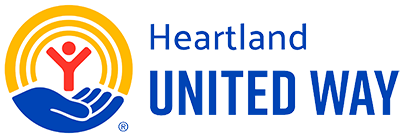Day of Action aims for more reading, better futures
By Elizabeth Rembert
elizabeth.rembert@theindependent.com Jun 21, 2017
Bonnie Hinkle led Jacki Caldwell’s second-grade class in a chorus of "yums" and "ews" as the Grand Island school board president read a book called "Eating the Alphabet: Fruits and Vegetables From A to Z."
None of the students recognized apricots, but all the second-graders raised their hands to show they had eaten apples and blueberries. The entire class groaned at jalepenos for "J," and they cheered at kiwis for "K."
Each classroom at Lincoln Elementary had volunteer readers on Wednesday as part of the Heartland United Way Day of Action festivities. The day centered around the dedication of the new Little Free Library at the front of the school.
The box of books allows students and families to participate in a free book exchange, and the impact of the exchange will go beyond adding weight to students’ backpacks, said Kelly Henry, who chairs the Heartland United Way board.
"We want to connect communities to decrease childhood poverty," Henry said. The organization is sponsoring seven Little Free Libraries across Hall, Hamilton, Howard and Merrick counties. Another library will be installed at Starr Elementary.
Bonnie Oltean, a volunteer reader with the Heartland United Way, told Caldwell’s second-graders, "Sharing books can open doors and change lives. You do not have to wait until you’re grown up to change the world."
The emphasis on reading accessibility comes at a time when reading proficiency is paramount. Research from the Annie E. Casey Foundation shows that competent fourth-grade readers are more likely to graduate from high school and become economically successful adults.
Since every subject in every class after third grade requires textbooks and critical reading skills for full engagement, research draws direct connections from early reading competence to future educational and economic success. If you care about high school graduation and long-term prosperity, the research says, then you care about elementary reading.
Reading proficiency is also as disparate as it is important. The Annie E. Casey Foundation research found gaps between reading proficiency levels for high- and low-income students.
Nationally, 80 percent of children from lower income families are below reading proficiency levels, as are 76 percent of students attending high-poverty schools and 81 percent of Hispanic or Latino students.
These statistics mirror the demographics of Lincoln Elementary School, which qualifies as a high-poverty school because 92 percent of its students are eligible for free or reduced-price lunch. Ninety percent of Lincoln’s students are Hispanic, and the income and ethnicity makeup combine to put many of Lincoln’s students at a statistically higher risk to fall below reading proficiency levels.
Gaps in reading competency can also be widened by a lack of student access to books, but the new Little Free Library at Lincoln exists to fill that need.
After story time in their classrooms, students colored bookmarks that proclaim, "I’m ready to read!" They went out in single file, holding their bookmarks as the ticket that would give them a new book. The students jumped up and down as they walked toward the front of the school, eager to see the book tables.
Outside, the students chose from dozens of books designated by grade. Kindergartners and first-graders could pick from titles such as "There Is a Bird on Your Head," "Hippos Are Huge!" and "Oscar and the Moth."
Once the students selected their book, they immediately sat on the grass and opened to Page 1, as GIPS Superintendent Tawana Grover spoke.
"We are so lucky to have a community that rallies around reading," Grover said. "Thank you for giving a gift to students that keeps on giving."
After tearing the wrapping paper off the new Little Free Library and placing inaugural books in the box, the students returned to their classrooms, holding their new books close to their chests.
